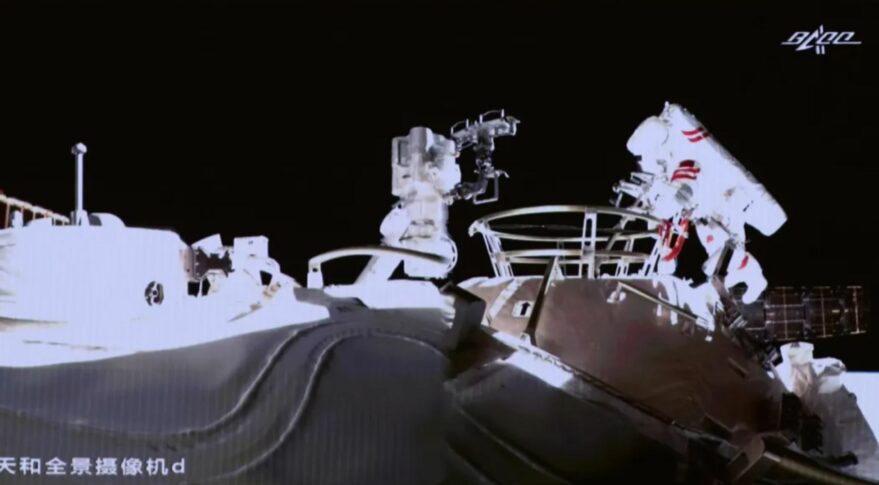
For SpaceUpClose.com & RocketSTEM
CAPE CANAVERAL, FL – A pair of Chinese astronauts have successfully completed the first ever spacewalk in support of construction of China’s new space station on July 4 (Beijing time) and were aided by a robotic arm during an extravehicular activity (EVA) conducted outside the Tianhe core module.
This counts as only the second ever EVA by Chinese astronauts and the first aboard the fledgling Chinese Space Station named Tiangong
“The first EVAs during the construction of the country’s space station were a complete success,” declared the China Manned Space Agency (CMSA) on Sunday.
Chinese astronauts Liu Boming and Tang Hongbo carried out the historic spacewalk over approximately 7 hours and completed all tasks before returned inside the space station core module at 2:57 p.m. (Beijing Time), according to CMSA.
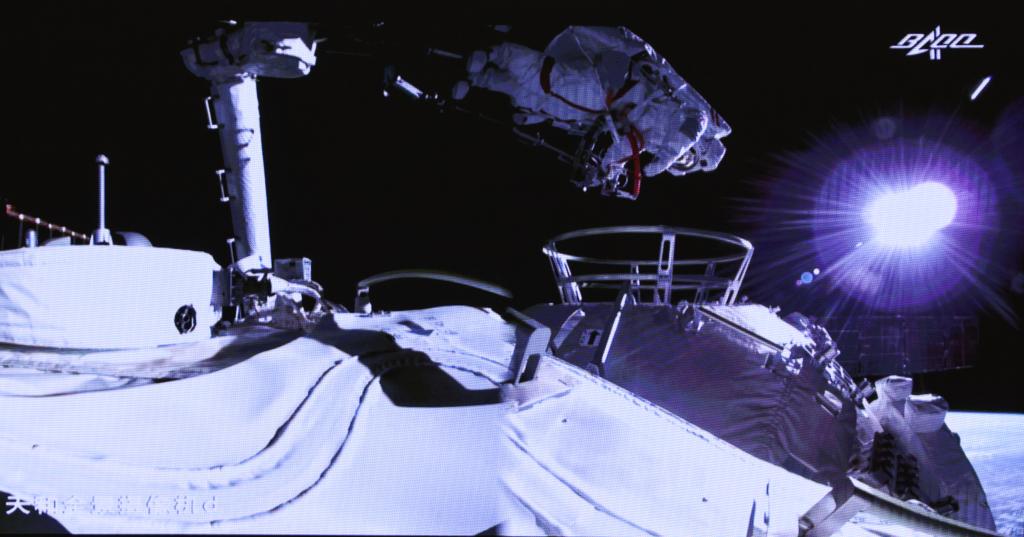
The third member of the crew astronaut Nie Haisheng staying inside Tianhe during the EVA to monitor and assist Liu and Tang during their EVA.
The two astronauts and mission control also used a 10.2-meter-long robotic arm installed outside Tianhe to carry out their tasks.
The robotic arm can carry up to 25 tons of weight.
“The mechanical arm is designed to ensure the safe and reliable operation of the space station in orbit, to help the astronauts in EVAs, such as the assembly, construction, maintenance, and repair of the space station, and support space applications,” reports Xinhua news agency.
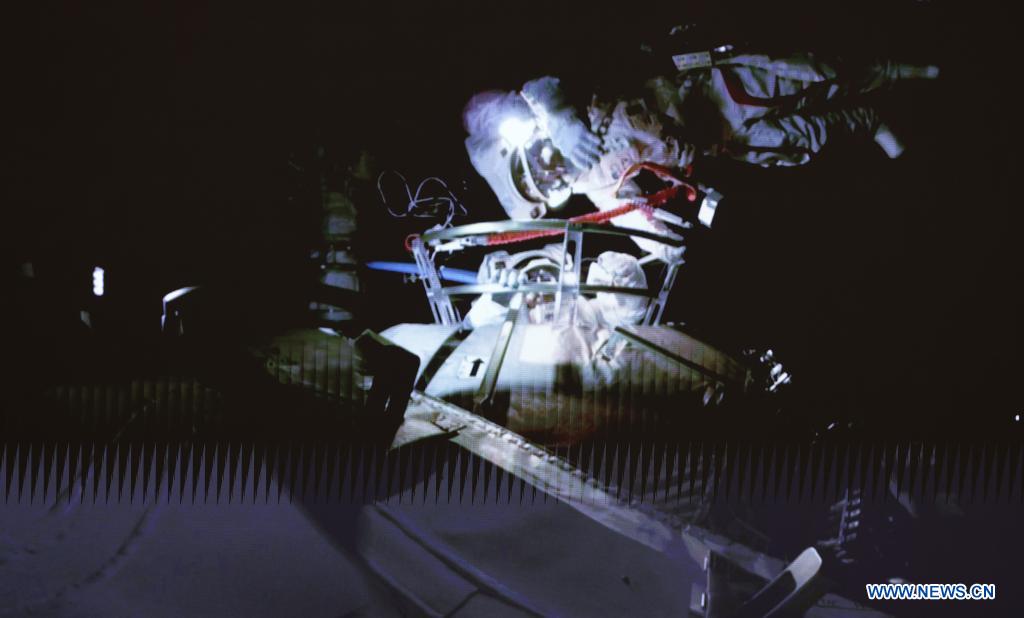
All three astronauts launched aboard the Shenzhou-12 spaceship on June 17 marking China’s first human spaceflight mission in five years since 2016.
The first ever Chinese EVA was carried out in 2008 during the Shenzhou-7 mission and lasted only 22 minutes.
“The scheduled tasks of the EVAs, including equipment installation and panoramic camera lifting, were accomplished with close coordination between space and the ground, as well as between the astronauts inside and outside of the spacecraft,” reported the Chinese news agency Xinhua.
“The EVAs tested the performance and function of the new-generation homemade extravehicular mobility units and the coordination between the astronauts and the mechanical arm, as well as the reliability and safety of related EVA supporting equipment.”
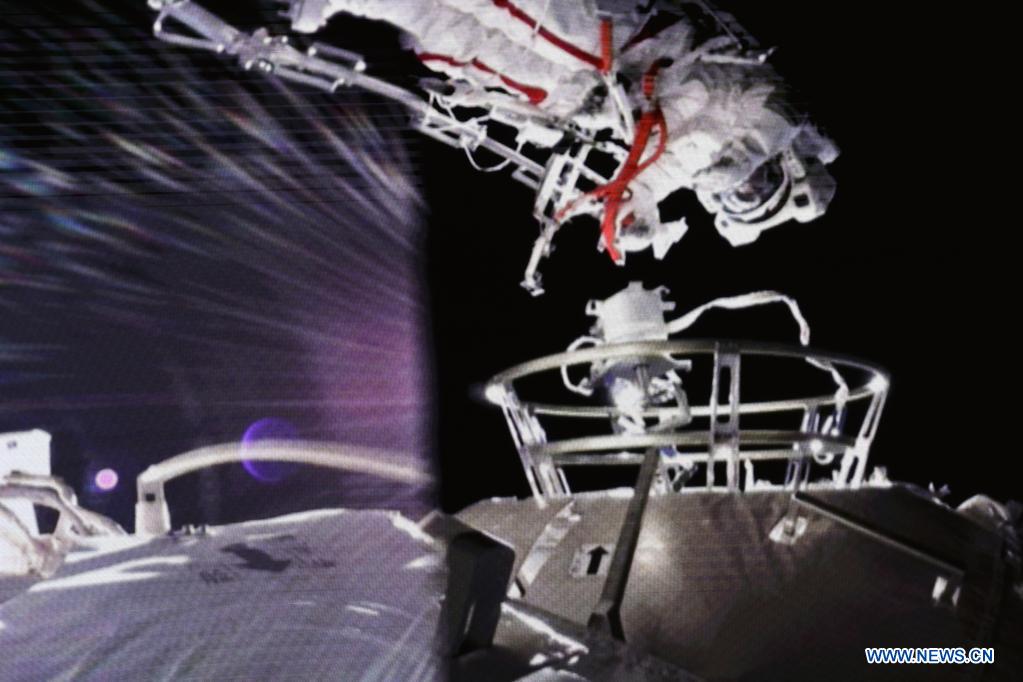
This has laid an important foundation for subsequent EVAs for the space station construction, said the CMSA.
CMSA said the crew will conduct a second EVA at some point during their planned three month mission aboard the station
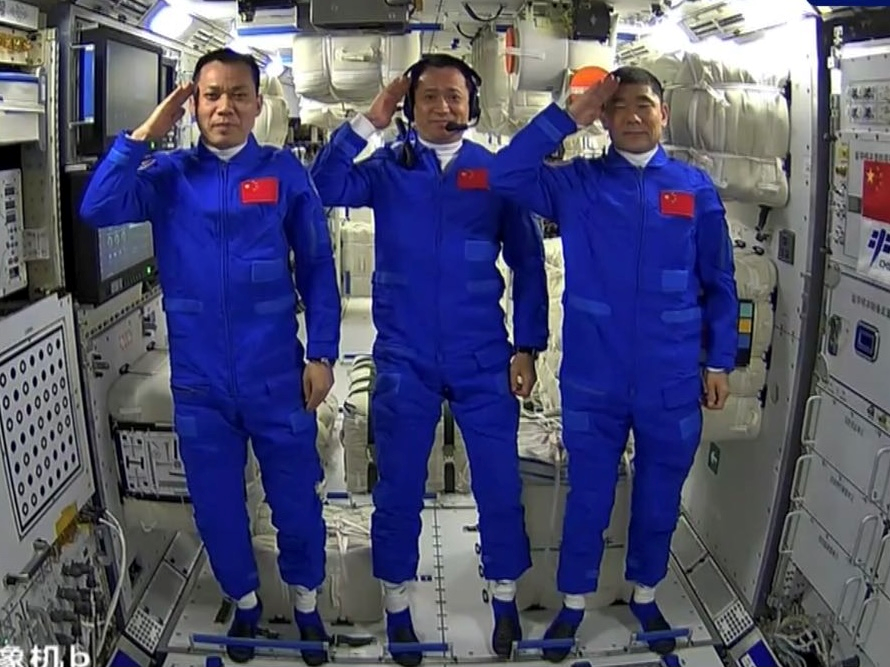
The three astronauts aboard Shenzhou-12 are comprised of two veteran and one rookie spaceflyer. They docked autonomously at the Tianhe core module of the Chinese Space Station dubbed Tiangong at 3:54 a.m. EDT, 3:54 p.m. BJT , 0754 GMT, June 17.
The all male trio of Shenzhou-12 crewmembers are Nie Haisheng, Commander and veteran of two prior Shenzhou missions, Liu Boming, a veteran of one mission, and Tang Hongbo, the rookie member of the crew.
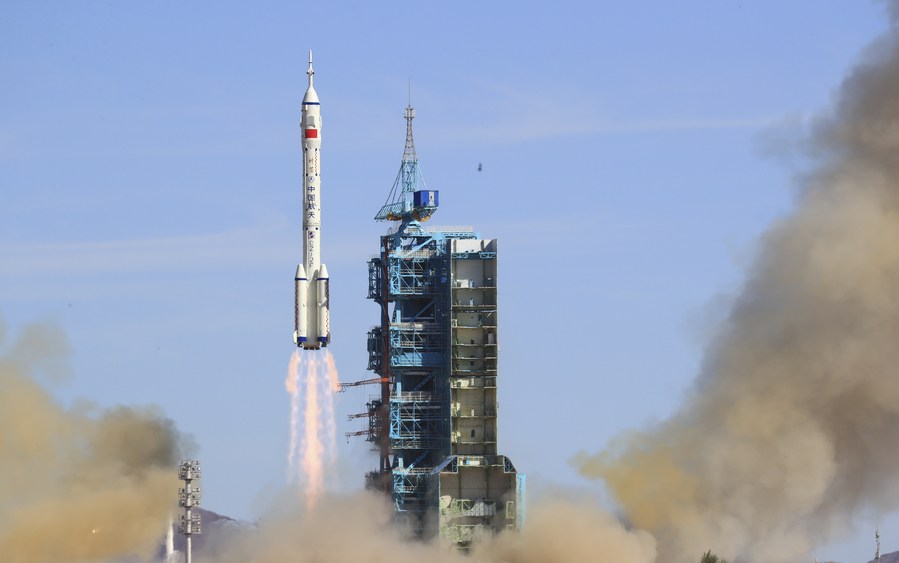
The Tianhe core module, which means “Harmony of the Heavens” serves as the docking hub and provides life support, sleeping quarters and propulsion for the Chinese Space Station.
The Tiangong space station is traveling in low Earth orbit circling about 390 kilometers (240 miles) above the surface and inclined about 41.5 degrees north and south of the equator.
The three Chinese astronauts are well into their three-month in-orbit residency in the combination of the Tianhe core module, the Tianzhou-2 cargo spacecraft and the Shenzhou XII manned spacecraft.
The liftoff and docking of Shenzhou-12 continues China’s fast-paced assembly schedule of the country’s new space station following the successful April 29 launch of the massive 22 ton core module named Tianhe to orbit on a Chinese Long March-5B rocket that kicked off a very ambitious series of 11 launches aiming to complete the construction of the T-shaped station by the end of next year.
The Tianhe launch was followed up by China’s Tianzhou-2 cargo ship launch on May 29 which successfully docked eight hours later on May 30 with the core module on a mission to deliver nearly seven tons of supplies, equipment, science, spacesuits and propellant to the fledgling outpost circling in low Earth orbit ahead of the first crew launch now accomplished June 17.
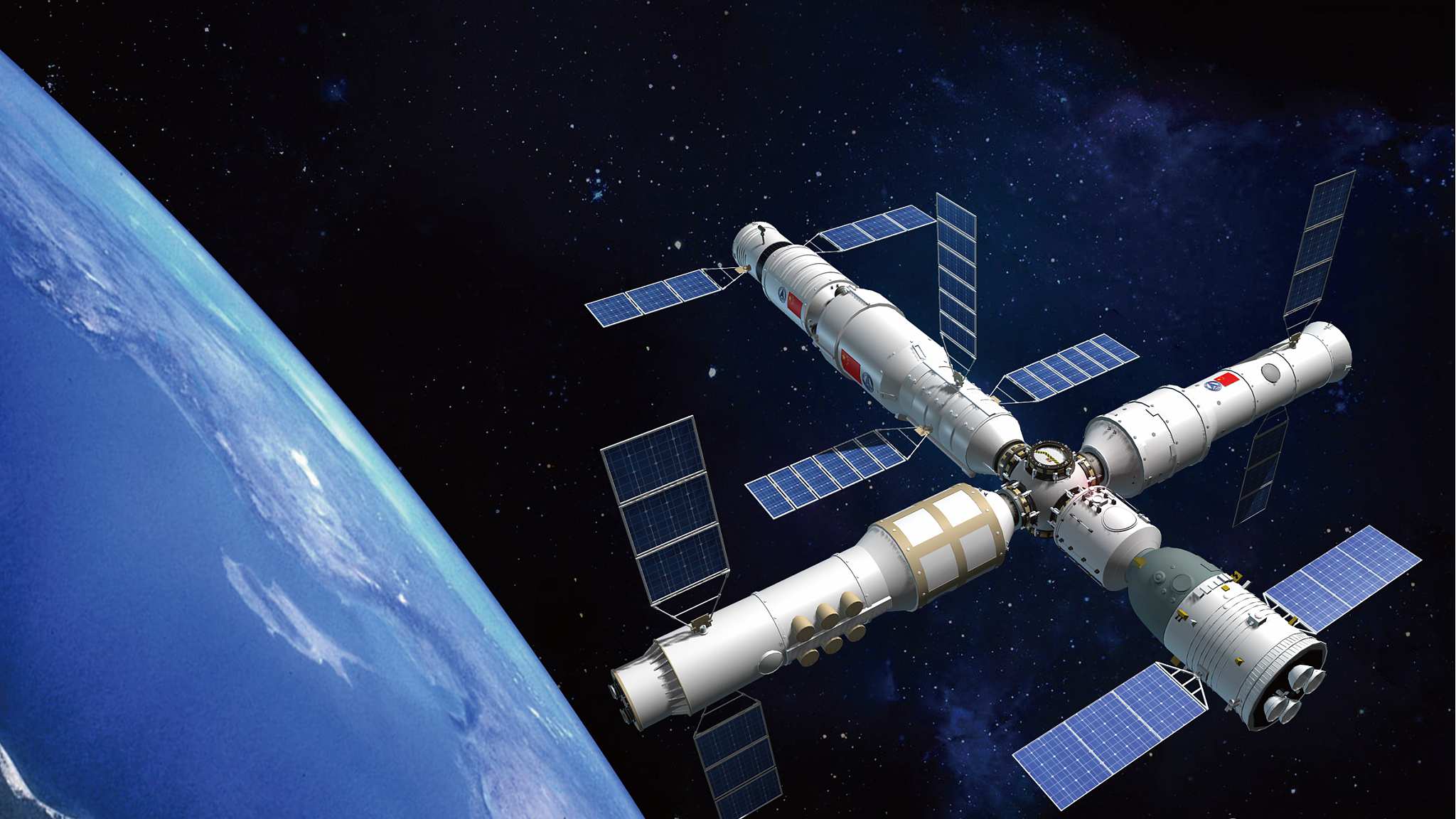
After Shenzhou 12 departs they will be replaced by a new three person crew on the Shenzhou 13 later this year as soon as September.
That three person crew is likely to include the first female Chinese crew member launching to the space station and will also signal the start of routine six month stays aboard.
China also plans to launch the Tianzhou 3 cargo spacecraft in September or October.
The new Space Station counts as the most ambitious program ever in the history of China’s human space flight program.
Altogether China plans a series of 11 missions to complete assembly on an accelerated schedule by the end of 2022.
These 11 station assembly missions include three launches of space station modules, four cargo vessel flights, and four manned missions.
Five space station mission launches are scheduled this year and six in 2022.
Two additional habitable laboratory modules that are similarly sized to Tianhe will be added next year – each with a mass of about 22 tons.
They are named the Wentian and Mengtian lab modules
The space station will take on a T shape when complete with the core module at the center and a lab capsule on each side.
At times the overall mass will reach to about 100 tons when cargo and manned spacecraft are docked.
Two additional Tianzhou cargo spacecraft and two additional Shenzhou manned spaceships will also launch next year for a total of six flights in 2022 remaining to complete the construction of the space station.
Here are further details about the robotic arm from Xinhua:
The 10.2-meter-long robotic arm installed on the Tianhe module can carry up to 25 tonnes of weight.
It consists of seven joints, two limbs, two sets of extension gears, two sets of end cameras and end effectors (also known as end-of-arm tooling), one set of central controllers, and an elbow camera.
With limbs and joints, the mechanical arm can work as a human arm with a shoulder, an elbow, and a wrist. By rotating each joint, it can grasp the equipment and operate at any angle and position.
“The end effector of the arm can dock with a target adapter installed on the outer surface of the spacecraft. By docking and separation of the end effector and target adapter, the arm can crawl and move on the surface of the space station,” said Wang Youyu, a mechanical arm designer at the China Academy of Space Technology (CAST).
In a computer illustrated video issued by the CAST, the arm, like an inchworm crawling with its head and rear, uses the two end effectors to move between the surface target adapters and reach multiple positions in the outer surface of the space station, where it can conveniently do its jobs.
In addition to working independently, the core module arm can also combine with the mechanical arms installed on the lab modules, which will likely be launched next year. The combined arm can reach a working diameter of 15 meters.
Watch Ken’s continuing reports about China’s space program, Artemis and NASA missions, SLS, Orion, SpaceX, Starlink, Commercial Crew and Starliner and Crew Dragon and onsite for live reporting of upcoming and recent SpaceX and ULA launches including Crew 1 & 2, Demo-2, ISS, X-37B, Solar Orbiter, Mars 2020 Perseverance and Curiosity rovers, NRO spysats and national security missions and more at the Kennedy Space Center and Cape Canaveral Space Force Station.
Stay tuned here for Ken’s continuing Earth and Planetary science and human spaceflight news: www.kenkremer.com –www.spaceupclose.com – twitter @ken_kremer – email: ken at kenkremer.com
Dr. Kremer is a research scientist and journalist based in the KSC area, active in outreach and interviewed regularly on TV and radio about space topics.
………….
Ken’s photos are for sale and he is available for lectures and outreach events
Please consider supporting Ken’s work by purchasing his photos and/or donating at Patreon:
https://www.patreon.com/kenkremer
x



